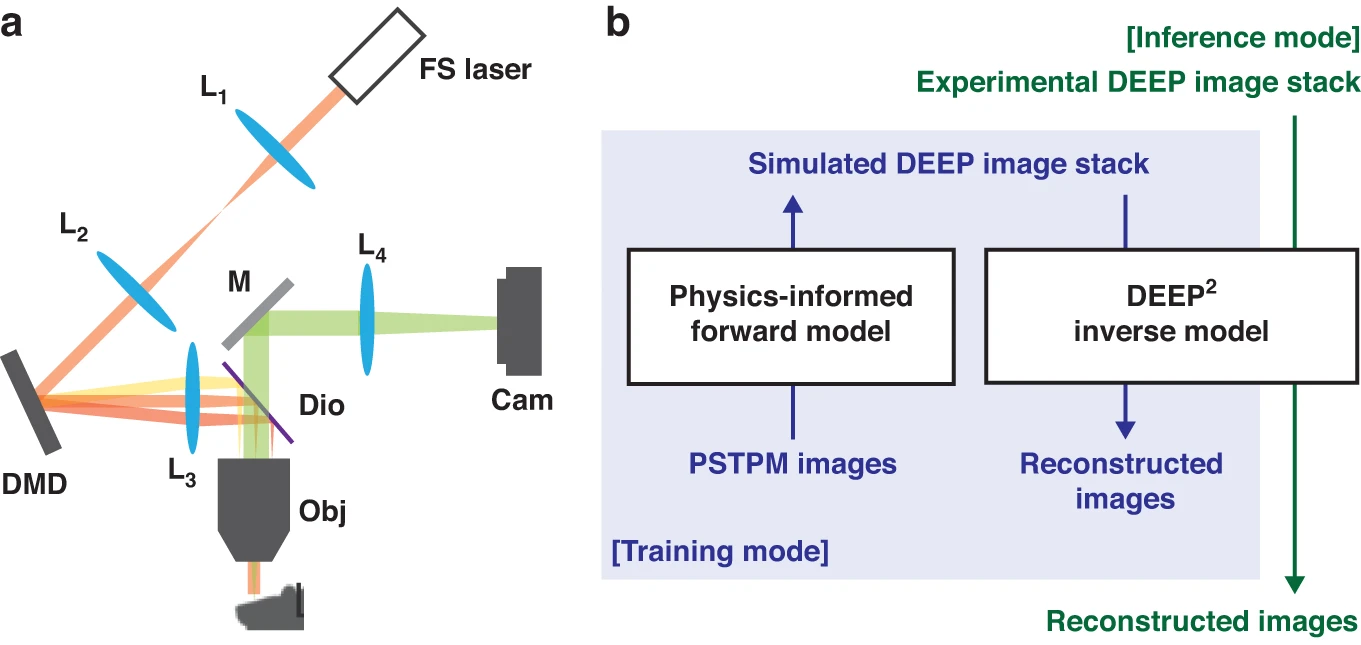Limited throughput is a key challenge in in vivo deep tissue imaging using nonlinear optical microscopy. Point scanning multiphoton microscopy, the current gold standard, is slow especially compared to the widefield imaging modalities used for optically cleared or thin specimens. We recently introduced “De-scattering with Excitation Patterning” or “DEEP” as a widefield alternative to point-scanning geometries. Using patterned multiphoton excitation, DEEP encodes spatial information inside tissue before scattering. However, to de-scatter at typical depths, hundreds of such patterned excitations were needed. In this work, we present DEEP2, a deep learning-based model that can de-scatter images from just tens of patterned excitations instead of hundreds. Consequently, we improve DEEP’s throughput by almost an order of magnitude. We demonstrate our method in multiple numerical and experimental imaging studies, including in vivo cortical vasculature imaging up to 4 scattering lengths deep in live mice.

